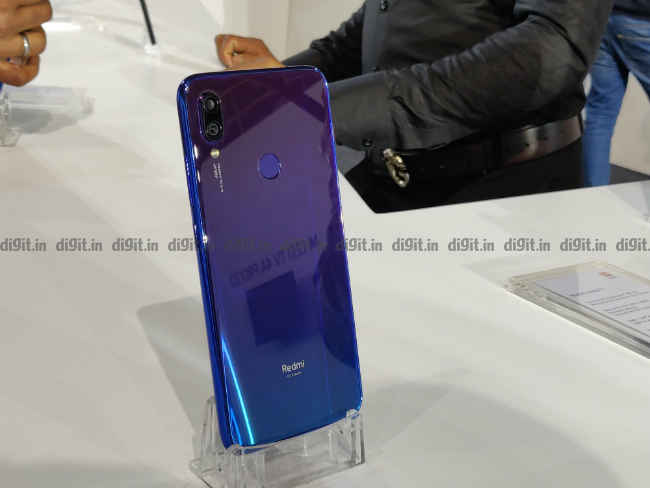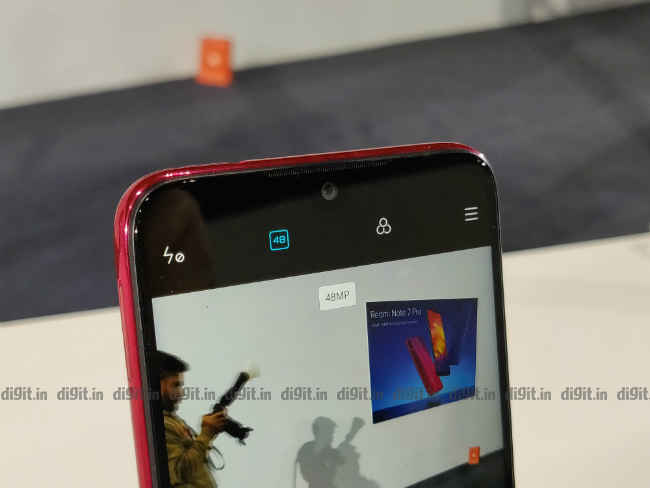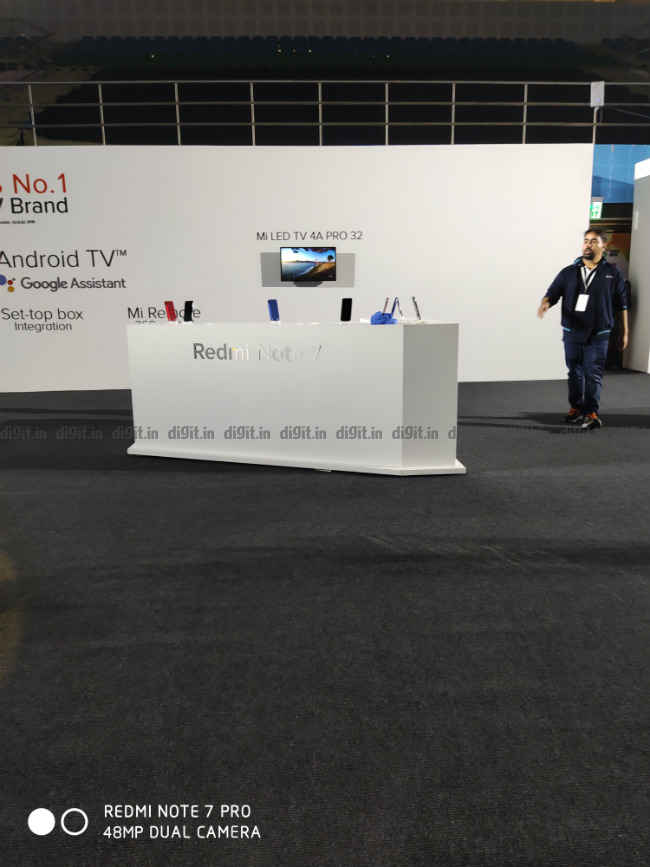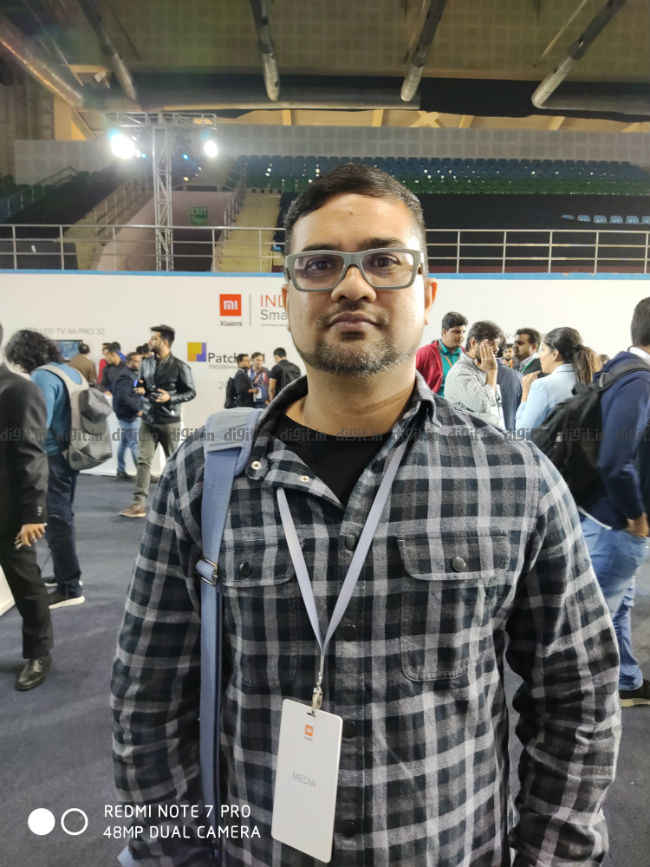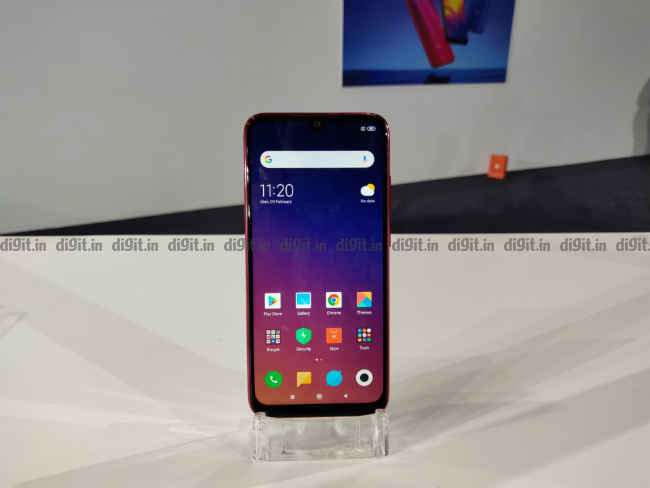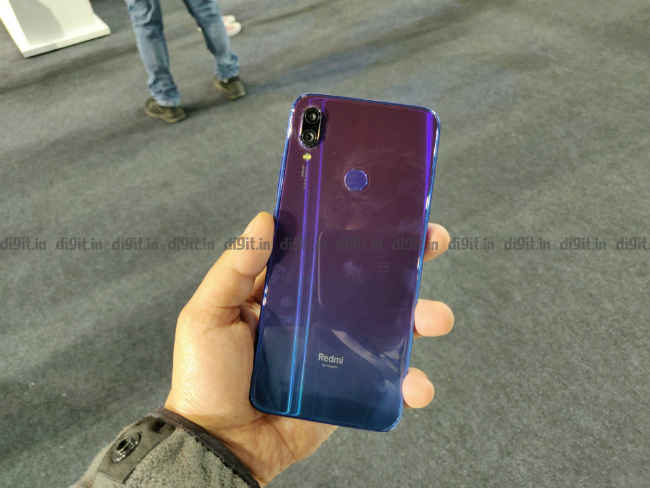Redmi Note 7 Pro First Impressions: A ‘Note’worthy attempt to change the mid-range smartphone game
The Redmi Note 7 Pro brings the 48MP camera sensor to the under-15k range, but that's not all that the phone offers. There's much more going on that makes this one of the most exciting mid-rangers in a long time. Here's our first take on it.
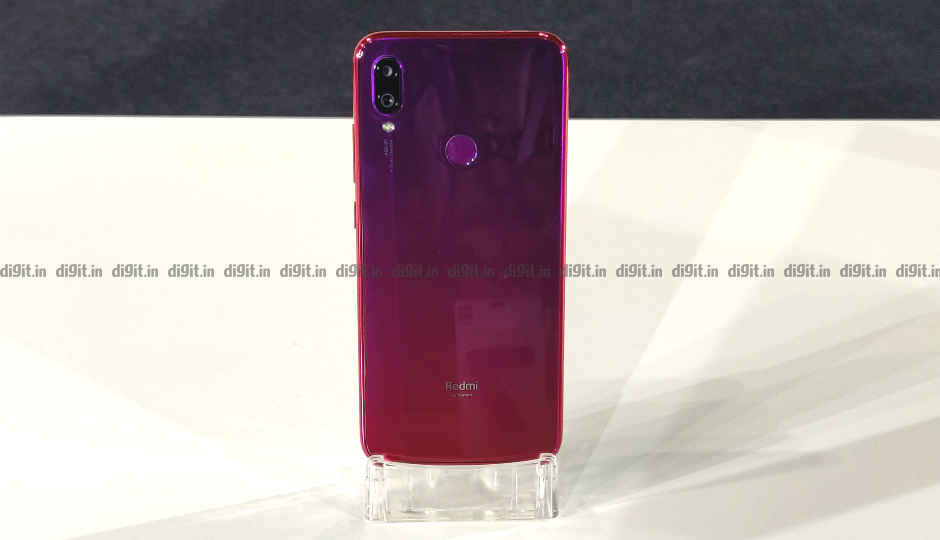
Coming back from one of the most anticipated smartphone launches in the first half of 2019, I couldn’t help but feel the smartphone industry has matured a lot, notwithstanding the cheap thrills of calling out competitors and making some strong allegations of having cheated their customers. The Redmi Note 7 Pro that launched today in India for a price starting at Rs 13,999 has a mind-boggling price/spec ratio. For what it offers, it seems any other OEM would have priced the phone above Rs 20,000. I’m talking 48MP camera sensors, Gorilla Glass 5 both the front and back, a bright LTPS LCD display, gradient colours and all that jazz, which might make the Redmi Note 7 Pro fly off the shelves.
 Survey
SurveyWe spent some time with the Redmi Note 7 Pro after the launch and went through most of the features that the company showcased on stage. While we still await detailed reports about how the smartphone fares against its rivals, the early impressions point to something disruptive in the mid-range segment. Here’s our first impressions of the Redmi Note 7 Pro:
A brand new gradient finish (but is it all that new anymore?)
Xiaomi was called out for being redundant in the design department because of incremental upgrades with the Redmi Note 5 Pro last year and then the Redmi Note 6 Pro in the second half of 2018. But you won’t be able to do the same with the Redmi Note 7. The phone introduced the gradient finish in that department after bringing the same to the flagship Mi 9 a few days back. Frankly, I’m not surprised as back-to-back offerings from Honor, Realme and even Asus pointed to the fact that the glossy glass-based design is in-vogue and Xiaomi was left with no choice.
However, unlike most other mid-rangers offering a glass-sandwich design, Xiaomi went one step ahead and reinforced the body with Gorilla Glass 5 on both sides. Early buyers of the phone also get a TPU case while a new perforated case (which looks quite ugly, if you ask me) was introduced for Rs 349. Xiaomi even coated the phone with a water-resistant material, which, while not making the phone waterproof, will save it from accidental splashes.
The Redmi Note 7 Pro looks quite stunning at first glance, save for the huge camera bump. It has the same form factor as the older Redmi Note 6 Pro, but with a larger display. In fact, Xiaomi has used a more sophisticated LTPS In-Cell LCD display with Full HD+ resolution, which the company claims is the best in the market. When taken out under the sun, the display boosts the brightness and contrast levels and adjusts the colour saturation to make it more visible. We’ll test the display out intensively to give you a final verdict, but it does looks quite good.
The Redmi Note 7 Pro also shrunk the size of the notch. This time there’s a waterdrop-notch which Xiaomi named the Dot Notch and it houses the 13MP front camera.
Camera has more pixels than you count
The next big highlight of the Redmi Note 7 Pro is the flagship Sony IMX586 48MP camera sensor on the back. This is what we really liked about the phone, and we hope the sensor improves mid-range photography by a great extent. It’s a 1/2-inch sensor (the largest mobile camera sensor available presently), which we also saw in action on the Honor View 20. But that’s a high-end device with the expected bells and whistles. The one on the Redmi Note 7 Pro also allows you to take 48MP photos, but only in Pro mode. Normally, you get a 12MP output and we are not sure as of now whether that 12MP output is achieved by binning the pixels or by cropping the sensor. The camera has an f/1.79 aperture and a 6-piece lens setup.
Nevertheless, Xiaomi enthusiastically compared the camera of the Note 7 Pro against that of the iPhone XS and OnePlus 6T, both way out of its league in terms of pricing and hardware, and claimed that the 48MP camera manages to beat both the phones. We did take a few camera samples in the demo zone, but they weren’t conclusive enough to give a comprehensive verdict.
You can check out the camera samples below.
The 48MP camera is paired with a 5MP depth sensor that lets you take portrait photos. Xiaomi offers its AI Portrait 2.0 that allows you to adjust the depth of field in post processing. The bokeh still felt quite artificial but the edge-separation in the subject seemed quite on point.
The camera also offers a night mode that uses software to stabilise the shot, similar to what the OnePlus 6T does with its “Nightscape” mode, along with the AI Scene Recognition that came with the Redmi Note 6 Pro.
On the front is a 13MP selfie camera that lets you take portrait selfies using software.
Snapdragon 675-based performance aimed at gamers
The 48MP camera would not have been possible on the Redmi Note 7 Pro without the 11nm Qualcomm Snapdragon 675 SoC. It’s the chipset that debuted with the Vivo V15 Pro a few weeks back, and based on our chipset comparison, it’s around 27 percent faster than the Snapdragon 660 on benchmarks, and in some cases, even beats the high-tier Snapdragon 710 in performance. The chipset features the same Cortex A76 cores as the Snapdragon 855, but downclocked to 2.0GHz. The chipset also offers a better Adreno 612 GPU, as compared to the Snapdragon 660’s Adreno 512 that promises better gaming performance. Furthermore, Qualcomm has tuned the chipset to allow popular games like PUBG Mobile to run smoother.
Paired with the chipset is 4GB or 6GB LPDDR4X RAM along with 64GB or 128GB storage variants. Both variants have expandable storage up to 256GB.
The Redmi Note 7 Pro also comes with the latest MIUI10 based on Android 9 Pie. Based on the initial usage, there didn’t seem to be any exciting new features in the UI. Xiaomi did claim some under-the-hood optimisations, which will come to surface once we get to use the phone at length. The UI still looks more or less the same as before, but with the standard Android 9 Pie additions like gesture navigation and quick replies.
4000mAh battery with Quick Charge 4.0 (Finally!)
Lastly, the Redmi Note 7 Pro stands true to its heritage by packing a large 4,000mAh battery inside, which, coupled with the power optimisations in the Snapdragon 675, promises 8 hours of continuous gaming. We will certainly put that claim to test (a fun way to spend eight hours at work), but more importantly, this is the first Redmi Note device to come with a USB-C port with support for 18W Quick Charge 4.0. Hopefully, we will see this as a standard in future Redmi phones, but I’m not too optmistic considering Xiaomi chickened out by offering only a 10W charger out of the box. To get the full speed of 18W charging, you will have to buy a separate QC4.0-certified charger.
First Impressions
Like every year, Xiaomi’s year began with a bang that should make a lot of mid-range smartphone makers worry. The Redmi Note 7 Pro offers some fantastic new features like a 48MP camera, a top-of-the-line mid-range processor and an attractive new design. Its price-to-spec ratio is perhaps the highest among all other mid-rangers right now, and the phone has a very good chance of becoming the bestseller this season. However, I would not discount others like the Samsung Galaxy M30, particularly for the ultra wide-angle camera it offers and the massive 5,000mAh battery powering it, or the Honor 10 Lite, which so far has aced our test-sheets among other Snapdragon 660-powered phone. There’s also the argument of sticking to the lower-priced Redmi Note 7 if you don’t need a high-resolution camera. All that will be answered in our in-depth review next week. Stay tuned!
